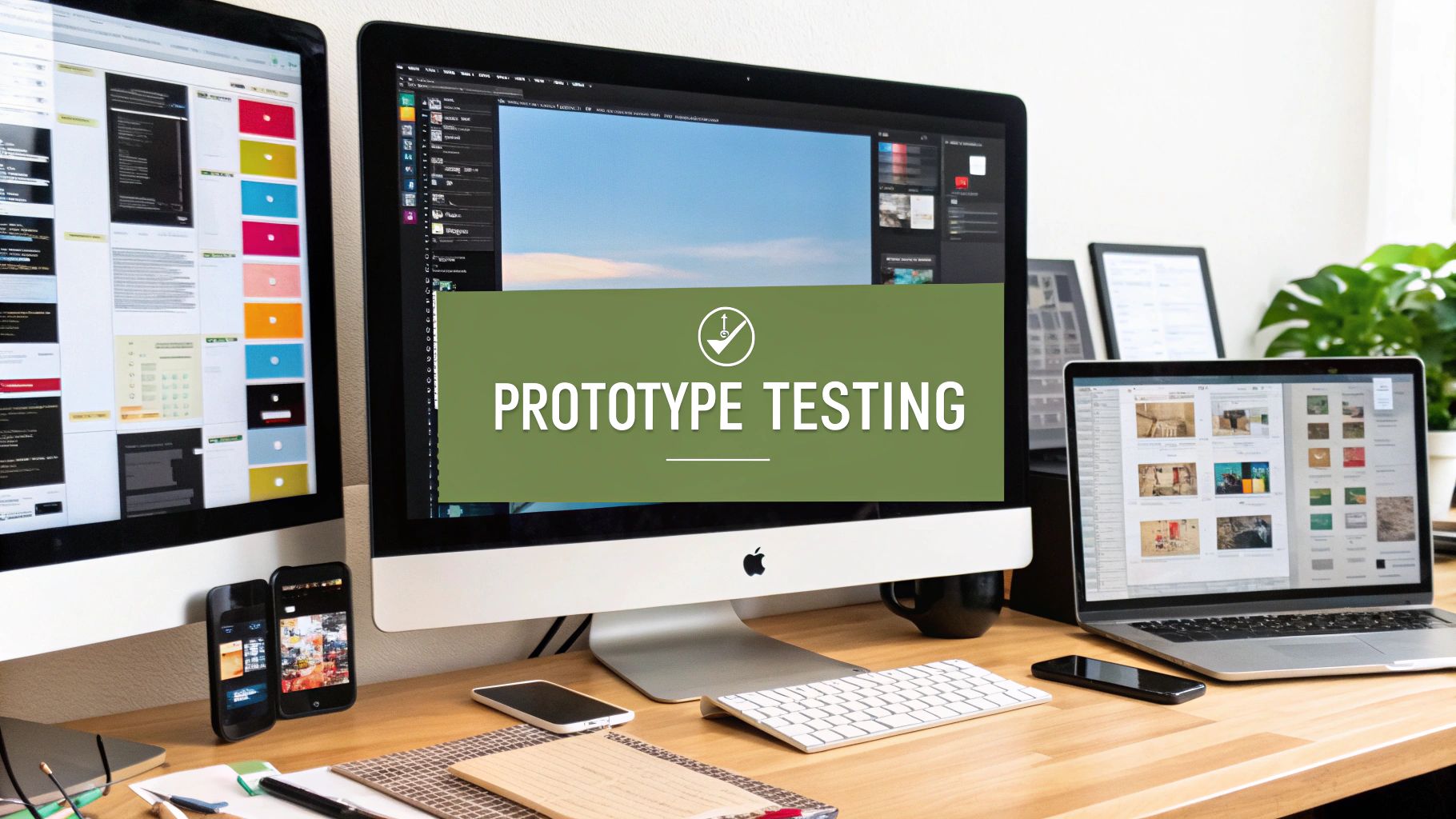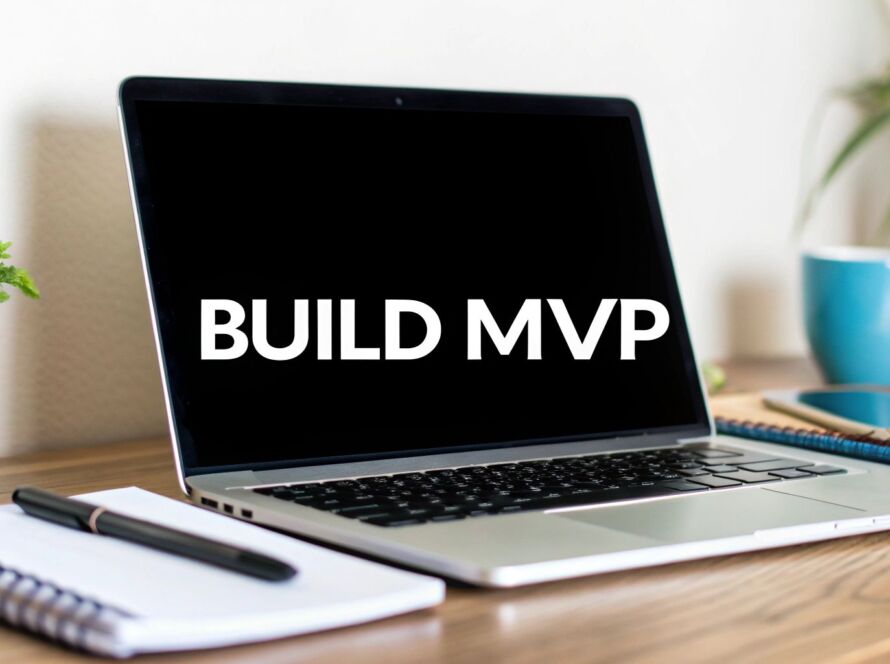Navigating the Real Costs of Product Development

When it comes to product development, understanding the true costs involved can feel like solving a complex puzzle. While rough estimates are easy to come by, the final investment needed depends on many interconnected elements working together. Basic products may start around $20,000, but more sophisticated projects often exceed $100,000. Getting a clear picture of these cost drivers is essential for smart budget planning.
Unveiling the Factors Behind the Numbers
Product complexity stands out as one of the biggest influences on development costs. Just as building a simple cabin requires fewer resources than constructing a luxury mansion, creating a basic app with limited features costs much less than developing an intricate platform with rich UI/UX, multiple screens, and extensive backend systems. A straightforward mobile app might run $30,000-100,000, while a full-featured multi-platform solution could easily reach $200,000 or more.
Your development team's location also shapes the bottom line significantly. For instance, working with teams in certain Asian regions typically costs less per hour compared to North American or Western European developers, with rates spanning $25-100 based on location and skill level. This geographic flexibility gives you options for building high-quality products while managing costs effectively.
Technology's Impact on Your Budget
The technology stack you select plays a major role in both immediate and long-term expenses. For instance, opting for blockchain or artificial intelligence features adds specialized talent needs and development time, similar to choosing a high-end sports car over a practical sedan. A standard web application might cost between $15,000-250,000 depending on its features, while adding advanced capabilities can push that investment substantially higher.
The Hidden Costs of Product Development
Beyond the obvious expenses, several less visible factors can impact your total investment. Think of it like pet ownership – the adoption fee is just the start, followed by ongoing food, veterinary care and supplies. Similarly, your product needs continuous maintenance, bug fixes, and updates. You'll also need to consider scaling costs as your user base grows. Will your current infrastructure handle increased demand? While often overlooked initially, these ongoing expenses are crucial for accurate budgeting. Having clear scope definition and contingency plans helps navigate these potential challenges successfully.
Building Smart with MVP Strategies
Starting a successful product journey requires more than just understanding development costs. The most effective way to begin is often through a Minimum Viable Product (MVP) approach. By testing your core idea with real users before full development, you can make smarter investments, reduce risks, and create something that genuinely connects with your audience.
Why an MVP is Crucial for Cost Control
Consider how you would build a house – you wouldn't start construction without first validating the blueprints and location. An MVP works the same way for digital products. It lets you test your fundamental concept before investing in the complete build. For instance, a food delivery app might begin with basic ordering in one neighborhood instead of launching nationwide with every feature imaginable. While a full product can cost over $100,000, an MVP typically requires $30,000-$100,000 – a much more manageable initial investment that can save substantial money in the long run.
Prioritizing Features for Maximum Impact
The key to an effective MVP is selecting the right features to build first. Focus on core functions that deliver your product's main value proposition to users. Like building a car, you start with the engine and wheels before adding luxury features like heated seats. This focused approach helps you gather feedback on essential features early, letting you refine based on actual user behavior rather than assumptions. The result is more efficient spending and a product that better serves real user needs.
From MVP to Success: Real-World Examples
Many of today's leading products started as simple MVPs. Take Dropbox, which began with just a video showing how file syncing would work – they validated market interest before writing a single line of code. This early validation approach has helped countless products find their market fit efficiently. However, success still requires careful planning – set clear budgets for each development phase, identify potential issues early, and maintain flexibility to adapt based on user feedback. Starting small with an MVP doesn't mean thinking small – it means building smart.
Maximizing Value Across Global Development Teams

Smart product development often comes down to making the most of global talent. While working with international teams can significantly reduce costs, it requires careful planning and coordination to get the best results. Let's explore how to build successful global teams while keeping expenses in check.
Understanding the Global Cost Landscape
Looking at development costs worldwide reveals some striking differences. For instance, skilled developers in Asia often charge $25-$50 per hour, while similar talent in North America or Western Europe commands $75-$100+. This gap creates real opportunities to reduce costs while maintaining quality. However, choosing teams based solely on rates overlooks crucial factors that determine long-term success. The key is understanding how to effectively integrate teams across different regions.
Navigating the Challenges of Distributed Teams
Working across borders brings unique hurdles that can affect costs if not handled well. Time zones can limit real-time collaboration, requiring thoughtful scheduling and communication approaches. Cultural differences also shape how teams interact – what's considered normal feedback in one place might feel harsh in another. Success depends on developing strong cross-cultural awareness and shared expectations among team members.
Strategies for Success with Global Teams
Getting the most from international talent takes more than finding affordable developers. Clear communication is essential – from choosing the right tools to setting response time expectations and documenting decisions carefully. Using project management platforms helps keep everyone aligned despite location differences. Even simple virtual team activities can strengthen relationships and improve how people work together. These investments in team dynamics often lead to fewer misunderstandings and better results overall.
Building High-Performing Global Teams
Creating an effective international team requires specific steps:
- Establish Clear Roles and Responsibilities: Make sure each person understands their specific tasks and how they contribute to the bigger picture. This clarity helps work flow smoothly.
- Invest in Communication Tools: Choose platforms that make collaboration easy across distances. Good tools become the foundation for successful project management.
- Foster a Culture of Trust and Respect: Create an environment where open dialogue and mutual understanding thrive. A positive atmosphere helps everyone do their best work.
- Provide Regular Feedback and Recognition: Let team members know how they're doing and celebrate their achievements. This keeps motivation high and improves performance.
By actively addressing challenges and putting the right practices in place, companies can build successful global teams that deliver excellent results while managing costs effectively. This balanced approach allows organizations to tap into worldwide talent while creating high-quality products.
Custom Development vs. Off-the-Shelf Solutions
When building a product, you'll face a fundamental choice: should you create a custom solution from scratch or use existing off-the-shelf software? This decision shapes not only your initial product development costs but also your long-term success potential. While there's no universal right answer, understanding the key factors can help you make the best choice for your specific situation.
Evaluating Your Needs and Resources
Before making this important decision, take time to carefully assess your specific requirements and available resources. Key factors to consider include:
- Unique Features: Does your product need specialized capabilities that aren't available in existing solutions? Your core value proposition may require custom development if it depends on truly unique functionality.
- Integration Requirements: Think about how the new product will connect with your current systems. While off-the-shelf options can work well, they may have integration limitations that lead to higher costs later.
- Scalability: Consider your growth expectations. Custom-built solutions often provide more flexibility to scale as your user base expands. Although some pre-built options scale well too, make sure they can support your projected growth.
- Budget: Custom development typically requires more upfront investment, ranging from $50,000 to $1,000,000+ for complex projects. Off-the-shelf software usually starts much lower at around $5,000, but remember to factor in ongoing subscription costs.
Weighing the Pros and Cons of Custom Development
When you build a custom solution, you get complete control over your product's features and functionality. This means you can design it to match your exact needs, which can give you an edge over competitors. However, this control comes at a cost – custom development demands significant time and financial resources upfront. You'll also need to handle all maintenance and updates internally, which adds to your long-term expenses.
Exploring the Advantages of Off-the-Shelf Solutions
Pre-built software lets you get to market faster and often costs much less than custom development. These solutions come with ready-to-use features, documentation, and support teams, reducing your initial investment and setup time. The main drawback is that off-the-shelf options may not perfectly fit your needs. You might need to adjust your processes to match the software's capabilities. Plus, you'll depend on the vendor for updates and fixes, giving you less control over the product's future direction.
Making the Right Choice: A Framework for Decision-Making
To choose between custom development and off-the-shelf software, follow this practical framework:
- Define Your Core Needs: List out the essential features and functions your product must have
- Evaluate Available Solutions: Search for existing software options and see how well they meet your requirements
- Analyze Costs: Look at the total ownership costs for both approaches, including development, maintenance, and potential customization
- Assess Long-Term Implications: Think about how each option supports your business goals and growth plans
By carefully considering these elements, you can select the approach that best fits your budget and sets your product up for success. Taking time to make this decision thoughtfully is just as important as getting your initial cost estimates right.
Selecting Technology Stacks That Scale

The technology stack you choose today shapes your product's success for years to come. Just like building a home requires a strong foundation, picking the right technologies creates a stable base for growth while keeping costs in check. A basic web app might start at $15,000, while complex enterprise solutions can reach $250,000 – but making the wrong tech choices up front can lead to much higher expenses down the road.
Balancing Cost and Scalability
Finding the sweet spot between initial costs and future growth potential is crucial when selecting technologies. Think of it like choosing a car – you could buy an inexpensive model that needs frequent repairs, or invest more upfront in a reliable vehicle that costs less to maintain. While budget-friendly tech options are tempting, they may struggle to handle increased user load or require costly updates later on.
Evaluating Emerging Technologies
New frameworks and platforms emerge constantly, making tech decisions more complex. While exciting new tools appear daily, jumping on every trend can backfire. Smart companies look carefully at factors like community engagement, tool maturity, and long-term prospects before adoption. Just as you wouldn't build on shaky ground, avoid basing your product on technologies that might vanish in a few years. This careful evaluation prevents expensive rewrites when tools become obsolete.
Practical Approaches to Tech Stack Selection
When choosing technologies that will grow with your product, focus on:
- Future-Proofing: Pick technologies with active communities and ongoing development to avoid obsolescence
- Maintenance Needs: Consider the ongoing costs of updates and support, including specialized expertise requirements
- Technical Debt: Be mindful of shortcuts that create future rework – while sometimes needed for quick launches, too much technical debt leads to bloated expenses
The Real Cost of Technical Debt
Technical debt works like a high-interest loan – it might help short-term but costs more over time. Quick fixes can speed initial development, but often lead to expensive problems later. Picture using cheap materials to build a house – eventually repairs and renovations eat up any initial savings. The same applies to cutting corners on code quality or picking unsuitable technologies. A thoughtfully chosen tech stack may cost more upfront but pays off through easier maintenance, smoother scaling, and fewer emergency fixes. This forward-looking approach leads to lower total costs and a more resilient product over its lifetime.
Mastering Budget Control and Risk Management

Product development success relies on more than understanding initial costs – it requires careful budget management and smart risk planning from start to finish. The most effective product teams implement clear tracking systems, make strategic resource choices, and stay flexible when challenges arise. Let's explore the practical approaches that help teams maintain financial control while minimizing risks along the way.
Establishing a Robust Cost Tracking System
The heart of budget control is a solid cost tracking system. Beyond just comparing expenses to the initial budget, this system should provide clear insights into spending patterns. Many teams use Jira or similar project management tools that include budget tracking features, giving real-time visibility into finances. Regular review of these numbers helps spot trends early, allowing teams to address potential overruns before they become serious problems.
Resource Allocation and Optimization
With tracking in place, smart resource allocation becomes essential. This means carefully dividing your budget across development phases, team members, and tools. For example, during MVP development, focus spending on core features while setting aside smaller amounts for secondary functions. Consider the cost differences between in-house work and outsourcing, since development costs can vary significantly by location. Making thoughtful allocation choices ensures every dollar spent moves the project forward meaningfully.
Building Contingency Plans for Unexpected Costs
Even with careful planning, surprises happen during product development. That's why setting aside emergency funds is crucial – typically 5-10% of the total budget. This buffer can cover technical issues, scope adjustments, or external factors affecting timelines. Think of it like keeping a rainy day fund – having financial flexibility lets teams handle challenges calmly without derailing the whole project.
Managing Scope Creep and Maintaining Financial Control
Scope creep – where project requirements gradually expand – can quickly drive up costs and delay timelines. It's like starting a simple kitchen update but ending up remodeling the whole house. The key is clear communication between everyone involved. Well-documented project goals, specific requirements, and regular progress checks help keep expectations realistic and prevent unnecessary additions. By staying focused on the original scope, teams can deliver on time and on budget.
Are you ready to bring your product vision to life? MarkBox Studios helps founders and business owners navigate product development successfully, from initial MVP to scalable solutions. Our experienced team provides practical strategies and guidance to help you achieve your business goals. Visit us today to start building your success story.



